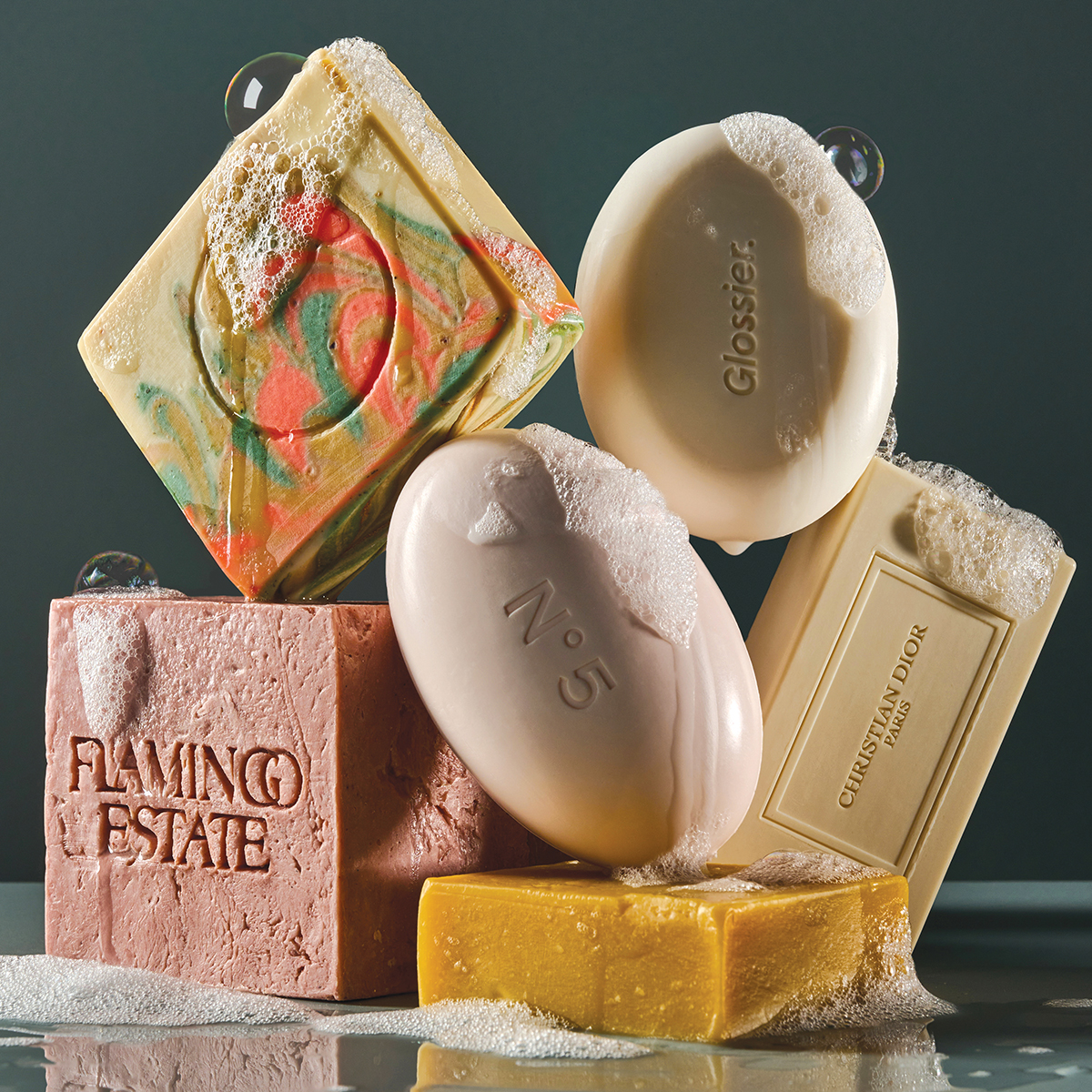
To make a bar of soap, you only need two ingredients: an alkaline and a fat. But what's the fun in keeping things simple? In recent years, the time-honored craft of soap making has gone through a modern and artistic boom—with brands both big and small taking note.
Most people believe the first bars of soap were made in Babylon around 2800 BCE. "All the ancient cultures, in one form or another, were making a soap product. They did it out of necessity back then, for cleaning clothes and sanitizing," says Leigh O'Donnell, executive director of the Handcrafted Soap & Cosmetic Guild. Regardless of a few ingredient switch-ups (goodbye tallow and ash, hello skin-soothing and planet-conscious olive oil and aloe), bar soap serves the same general purpose today. In a world of constant technological updates, it's lasted thousands of years, holding strong through a synthetic detergent takeover in the 1920s and the major body wash craze of the '80s and '90s.
Still, today's soaps look slightly different than the boring bars people associate with their grandparents' sinks. "Everyone grew up on Dial and Irish Spring. It was very simple back then," says Linda Meyers, who founded Wary Meyers with her husband, John Meyers, and began making soap in 2015. "When we started in the soap business it wasn't trendy. But now it's no longer outrageous."
Today, the development of bar soap is seen as an art form, employing a new generation of artisans. O'Donnell estimates the handcrafted soap business in the U.S. has doubled since 2004. She believes the recent rise in popularity can be attributed to multiple causes: ample crafting time in the pandemic, the public's desire to understand ingredients, and soap's function as a recession-proof product. It's both utilitarian and luxurious.
In 2023, Glossier launched a bar soap version of their beloved Milky Jelly Cleanser: the Milky Jelly Cleansing Bar. "Bar soaps might feel like an old tradition, but they're having a resurgence," says Kleo Mack, the brand's chief marketing officer. "Consumers are looking for sustainable, concentrated, and gentle bar formulas that they can use in multiple areas."
With other bright and shiny new companies like D.S. & DURGA (who contract Maine-based Wary Meyers for their bricks), Fenty Beauty, Drunk Elephant, and Nécessaire also adding bar soaps to their repertoires, legacy soap brands like Caswell-Massey and Ivory are holding strong. The real driver of the current boom, however, is social media, where soap-cutting and sudsing ASMR videos constantly loop.

When Sparta Candle Co. owner Jennifer Swenk's first bar of soap went viral, she received more orders than she could fill. "We were making it on folding tables in our stock area," says Swenk, whose company now boasts nearly a million TikTok followers and has outgrown multiple warehouses. Today, fans from all over travel to Sparta's quaint North Carolina store and stock up on sold-out-online bars.
Whether makers are using rare ingredients such as algae or rice bran or marketing their brand in momentous ways, the world of soap making is becoming more vibrant—while still retaining the old-world feel that makes cleansing with bar soap so comforting.
"There's something about the weight of holding a brick of soap that feels so indulgent," says Flamingo Estate founder Richard Christiansen, whose bar soaps are hand-mixed, hand-cut, and hand-wrapped in Los Angeles. "It turns the process into a ritual and it's my favorite way to wake up. There's something pure and simplistic about a bar of soap—it's tactile and sensorial."
This floral option features a hint of rose inspired by the La Colle Noire gardens in France.
An incredibly mild cold-process bar made by a group of Navajo farmers, soapmakers, and herb gatherers.
Crafted in small batches, each ingredient is carefully grown and harvested by hand.
Handmade in a small 1940s cabin, this seawater soap features sustainable botanicals foraged from the Oregon coast.







